Future of the Harbor District
Community-engaged plan could transform 1,000 urban acres, nine miles of waterfront.
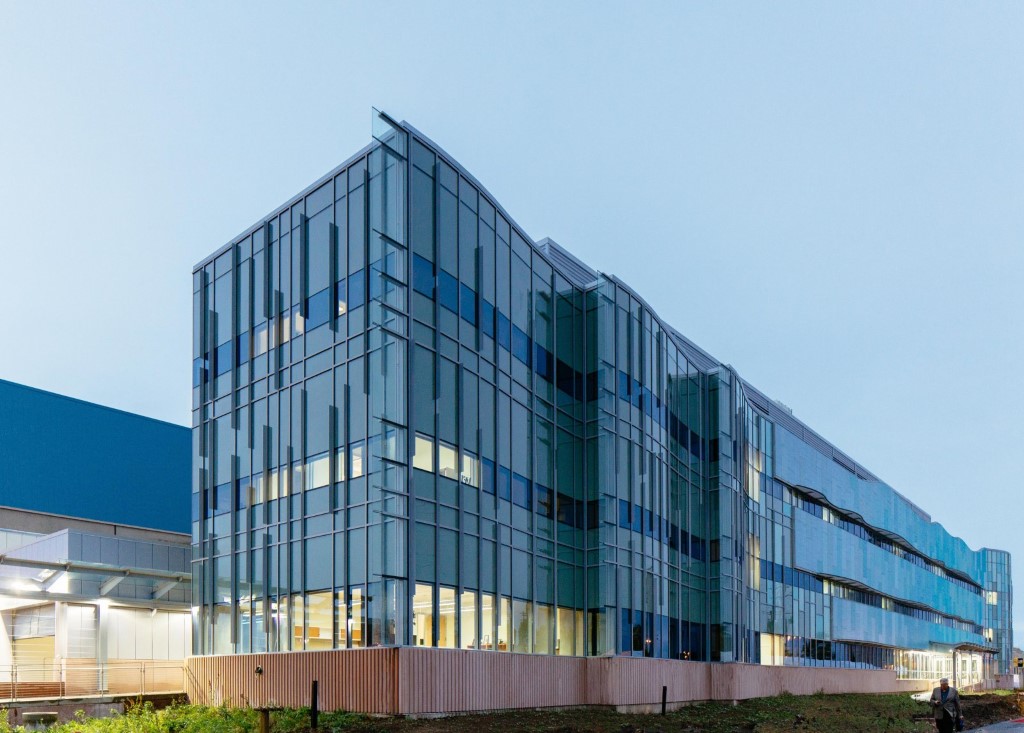
UWM School of Freshwater Sciences, 600 E. Greenfield Ave. Photo courtesy of the City of Milwaukee Department of City Development.
A year ago the Milwaukee Harbor District began is mission of “leading the charge to reimagine – and then rebuild” 1,000 acres of former industrial property including over nine miles of waterfront in the Milwaukee River estuary south of downtown.
Forty percent of the land is publicly owned; with 13 percent of the land being vacant. Despite the miles of waterfront, there is currently only one public access point.
Over the summer and fall the district conducted community meetings, bus, boat and bike tours and other activities to engage citizens in the process, and did so in a resolutely bilingual way, producing all materials in English and Spanish.
On October 26th and 27th, two “Harbor District Water and Land Use Plan Community Input Meetings,” were held at the studios of 88Nine Radio Milwaukee and then at the UWM Graduate School of Freshwater Sciences, 600 E. Greenfield Ave.
Dozens of attendees were at the UWM session, where staffed stations were set up to discuss “Issues and Opportunities,” (Asuntos Y Oportunidades).
These included:
- Transportation
- Improving the Environment
- Open Space and Public Access
- Land Use
- Working Together
The staff appears to have done its homework for the project. For example, three north-south bicycle route alternatives were presented for consideration.
Attendees received a “Harbor District WaLUP Community Discussion Worksheet,” which, unfortunately, did not tell us that “WaLUP” stands for “Water and Land Use Plan.”
The worksheet asked attendees ranging from local business and property owners to the “just curious,” for their (open-ended) opinions on the five things they feel the district could do to make Milwaukee a better place in the future.
The visitors were also asked their opinions of future uses of various segments of the massive property. What should the land use mix be? How do we improve access for all users (including boaters and bikers)? How can we bring back marshes and wildlife? What kinds of recreational opportunities should future generations have here?
Staff members at the various stations were engaging and well-informed. All appeared to either be well trained in public communications or just plain naturals.
The setting of the event, at the east end of E. Greenfield Ave., is in the heart of the district, and the new building offers excellent views of Milwaukee’s unknown waterfront. This is post-industrialism of the most recent vintage; traces of the monumental coal piles that once dominated the south side of the street can still be seen. The derelict Milwaukee Solvay Coke site still has plenty of ruins to poke around.
Yet just blocks to the west, new development continues to race through Walker’s Point, including some within the district boundaries. Within days, S. Barclay St. will once again connect to Greenfield for the first time in decades, offering an easterly alternative to S. 1st St., and access to the considerable street grid to the northeast.
Coming Up Next
- Winter 2016/2017: WaLUP released for review
- Winter 2016: Report to the Community
- Spring 2017: Implementation
Photos from the Event
Project Background
- Plenty of Horne: “Harbor Area Will be Redesigned” Urban Milwaukee, July 2015.
- “Creating a Working Waterfront for the 21st Century” presentation.
- Studio Gang presentation from 2015 design charrette.
Plenty of Horne
-
Milwaukee Modernism Gains National Awards
 Dec 15th, 2025 by Michael Horne
Dec 15th, 2025 by Michael Horne
-
New Rainbow Crosswalks Mark Milwaukee’s LGBTQ+ History
 Oct 8th, 2025 by Michael Horne
Oct 8th, 2025 by Michael Horne
-
Welcome Back, Tripoli Country Club!
 May 27th, 2025 by Michael Horne
May 27th, 2025 by Michael Horne


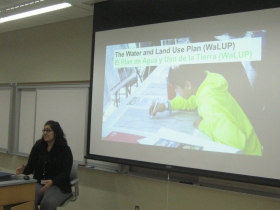
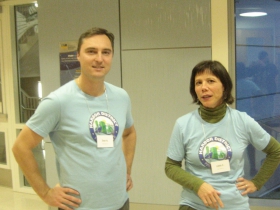

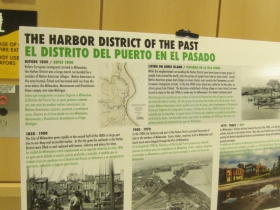
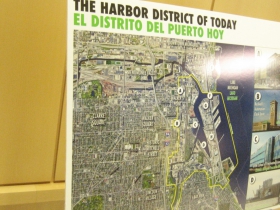
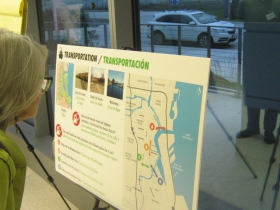


















A large, permeable surfaced community parking lot ‘experience’ equipped with MCTS bus stop and architecturally significant bus shelter and trash recepticals, Newaukee furniture (from their downtown installation), Bubbler Bike station, Uber and Zipcar kiosk, public WIFI, ground murals, sponsored by all of the above would cover all the salient points:
Transportation
Improving the Environment
Open Space and Public Access
Land Use
Working Together
It could also be marketed as the first designated Uber Drivers’ Rally site.
I’ve heard that much of this land will need to be remediated? Michael, was that part of the presentation–what it will involve and likely cost?
Michael, thanks for stopping in at our event and for the great summary.
For people who couldn’t make it to the evening workshops but would still like to share thoughts or get more information, we will have an online survey version of the event up on our website www. harbordistrict.org by Wednesday 11-2.
Virginia, you are correct that much of the land will require remediation. All of the land in this part of town was once marsh that was filled in with a variety of materials – from clean dirt to household waste to foundry sand. Subsequent to that, much of it was in industrial uses that resulted in additional contamination. Costs of clean-up vary widely, depending on individual site conditions and intended future uses. Luckily, Milwaukee has a lot of experience and know-how when it comes to cleaning up these kinds of sites, so environmental contamination is no longer the showstopper that it used to be.
– Lilith Fowler, Harbor District
Has there been any discussion about the hundreds of cormorants who summer on the vacant land at 1st and the KK river? I do not bring this up to stifle development. This is a unique situation that speaks to what makes the ecosystem of the harbor unique and an asset to our quality of life.
The cormorants to my understanding stick by the water so you will not see them in urban areas like you do gulls so people may not know about them. They get their food by diving into the water. Some can dive to 45 meters. Anyone interested in this would be wise to have a beer at Barnacle Bud’s this summer and watch them return at dusk from a day out on the lake.
Let’s try and come up with a development plan that works to keep this unique and amazing ecosystem thriving.
The Harbor District Water and Land Use Plan (WaLUP) survey is live at https://goo.gl/amUrah .
Thanks, Lillith. It’s great that Milwaukee has done so much reclamation, including in the Menonomee Valley.
Minneapolis is working on a major series of parks along the Mississippi River on the site of mill ruins.
https://mplsparksfoundation.org/projects/water-works/
https://mplsparksfoundation.org/2016/03/10/news-release-mpf-and-mprb-seek-water-works-final-design-and-cultural-resource-consultants/
And a massive park called Fresh Kills is being atop a dump site on Staten Island. They’re doing innovative work to regenerate soil and natural growth, rather than traditional remediation.
Good luck with all this.
If I understand this correctly, this seems like a once-in-a-generation opportunity. When you say 1,000 acres, is this the cumulative total throughout the area that can be developed or is this a contiguous piece of land? Is this similar in footprint and size to the area the Bucks are trying to develop? I would think some nationally reputable consultant would have examples of what other cities have done and could share that with the community groups? Regardless, fingers crossed that we do something spectacular.
Having just watched an awesome World Series, I still can’t believe the Brewers built a dome in a middle of a parking lot. Was this land in the harbor area not available 15-years ago and the Brewers were the victim of bad timing or was it that we turned the decision on the design and site over to a 70-year old guy with no moxie or vision? I know none of the background because I was living on the West Coast at the time and it’s still a mystery to me why they paved a cow path. This is a franchise with no “it” factor; would have been awesome to do something along the line of SD, PIT, SF, etc. I’m hopeful the area around the new arena wows us.